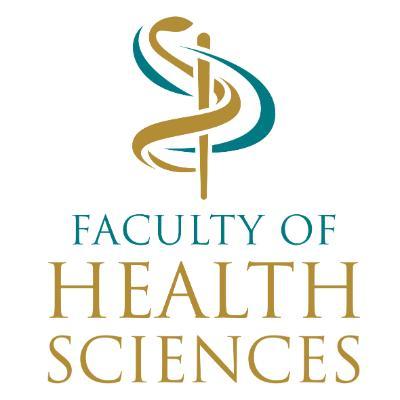Morphogenesis in Synergy
Members of both BMP and TGF-?families are pleiotropic factors that have potent and diverse effects on cell proliferation, differentiation, motility and matrix synthesis. The three mammalian TGF-?isoforms share limited homology with members of the BMP family (BMP-2 through BMP-6 and osteogenic protein-1 and -2 [OP-1 and OP-2]). Recombinant human BMP-2, BMP-4 and OP-1 (BMP-7) singly initiate endochondral bone formation in the subcutaneous space of the rat. On the other hand, TGF-? and TGF-?, either purified from natural sources or expressed by recombinant techniques, did not initiate endochondral bone formation in the in vivo bioassay.Recombinant DPP and 60A, other members of the TGF-?family expressed early in Drosophila development, induce endochondral bone formation in rats, demonstrating evolutionary conservation of related proteins from phylogenetically distant species. The relationship and interaction between osteogenic and non-osteogenic members of the BMP and TGF-?families are poorly understood. Together with BMPs/OPs, TGF-? and TGF-? are most abundant in the extracellular matrix of bone, indicating that TGF-?isoforms play important roles in bone physiology and homeostasis. Although TGF-? and TGF-? share some degree of homology with members of the BMP family, specific BMPs/OPs bind to unique receptors and do not bind to the TGF-?receptor. The presence of multiple molecular forms raises questions about the biological significance of this apparent redundancy, and suggests functional interactions and potential synergistic activities during both embryonic bone development, and bone regeneration in postnatal life.
In the paper abstracted below (Ripamonti et al., J Bone Miner Res 1997; 12: 1584-1595) we show for the first time that, contrary to established results in rodents, recombinant human TGF-? induces endochondral bone formation, and synergizes with recombinant human OP-1 resulting in the organogenesis of massive ossicles in extraskeletal sites of adult primates, providing evidence for a concerted action of related but different molecular forms in postnatal induction of cartilage and bone.
Recombinant Transforming Growth Factor-? Induces Endochondral Bone in the Baboon, and Synergizes with Recombinant Osteogenic Protein-1 (Bone Morphogenetic Protein-7) to initiate Rapid Bone Formation
Several members of the bone morphogenetic protein (BMP) and transforming growth factor-?(TGF-? families are molecular regulators of cartilage and bone regeneration, although their actual roles and combined interactions in skeletal repair are poorly understood. The presence of several molecular forms suggests multiple functions in vivo as well as synergistic interactions during both embryonic bone development, and regeneration of cartilage and bone in postfetal life. Here we show for the first time that recombinant human transforming growth factor-? (TGF-?) induces endochondral bone formation in extraskeletal sites of adult baboons. We also show that TGF-? and recombinant human osteogenic protein-1 (OP-1, bone morphogenetic protein-7) synergize in inducing large ossicles in extraskeletal sites of the primate as early as 15 days after implantation. A single application of OP-1, in conjunction with an insoluble collagenous matrix as carrier (5, 25 and 125 g per 100 mg of carrier matrix) induced bone differentiation in the rectus abdominis of the baboon. This level of tissue induction was raised several folds by the simultaneous addition of comparatively low doses of TGF-? (0.5, 1.5 and 5 g), which by itself induces bone formation in the rectus abdominis at doses of 5 g per 100 mg of carrier matrix. Combinations of OP-1 and TGF-? yielded a 2 to 3-fold increase in cross-sectional area of the newly generated ossicles, with marked elevated key parameters of bone formation, and corticalization of the newly formed bone by day 15, culminating in bone marrow generation by day 30. The tissue generated by the combined application of OP-1 and TGF-? showed distinct morphological differences when compared to OP-1 treated specimens, with large zones of endochondral development, and extensive bone marrow formation. At the doses tested, synergy was optimal at a ratio of 1 to 20 by weight of TGF-? and OP-1, respectively. These results provide evidence for a novel function of TGF-? in the primate, and the scientific basis for synergistic molecular therapeutics for the rapid regeneration of cartilage and bone. (J Bone Miner Res 1997;12:1584-1595)
Tissue morphogenesis by combinatorial action of related but different recombinant morphogens. Two juxtaposed ossicles, generated in extraskeletal sites, had grown toward each other and, whilst separated by a layer of intervening fibrous tissue, each ossicle shows a gradient of morphological structures highly suggestive of a rudimentary embryonic growth plate. Indeed the undecalcified section shows classic features of chondrogenesis and osteogenesis as seen in the embryonic growth plate. Subjacent to cartilage zones with columns of progressively maturing chondroblasts, there is vascular invasion, chondrolysis and generation of trabeculae of bone with marrow. The morphogenesis of structurally organized cartilage zones, highly reminiscent of rudimentary embryonic growth plates, is a finding that vividly illustrates the concept that regeneration of cartilage and bone in postnatal life shares common cellular and molecular mechanisms with embryonic bone development, and that the memory of developmental events in embryo can be redeployed postnatally by the application of morphogen combinations.

